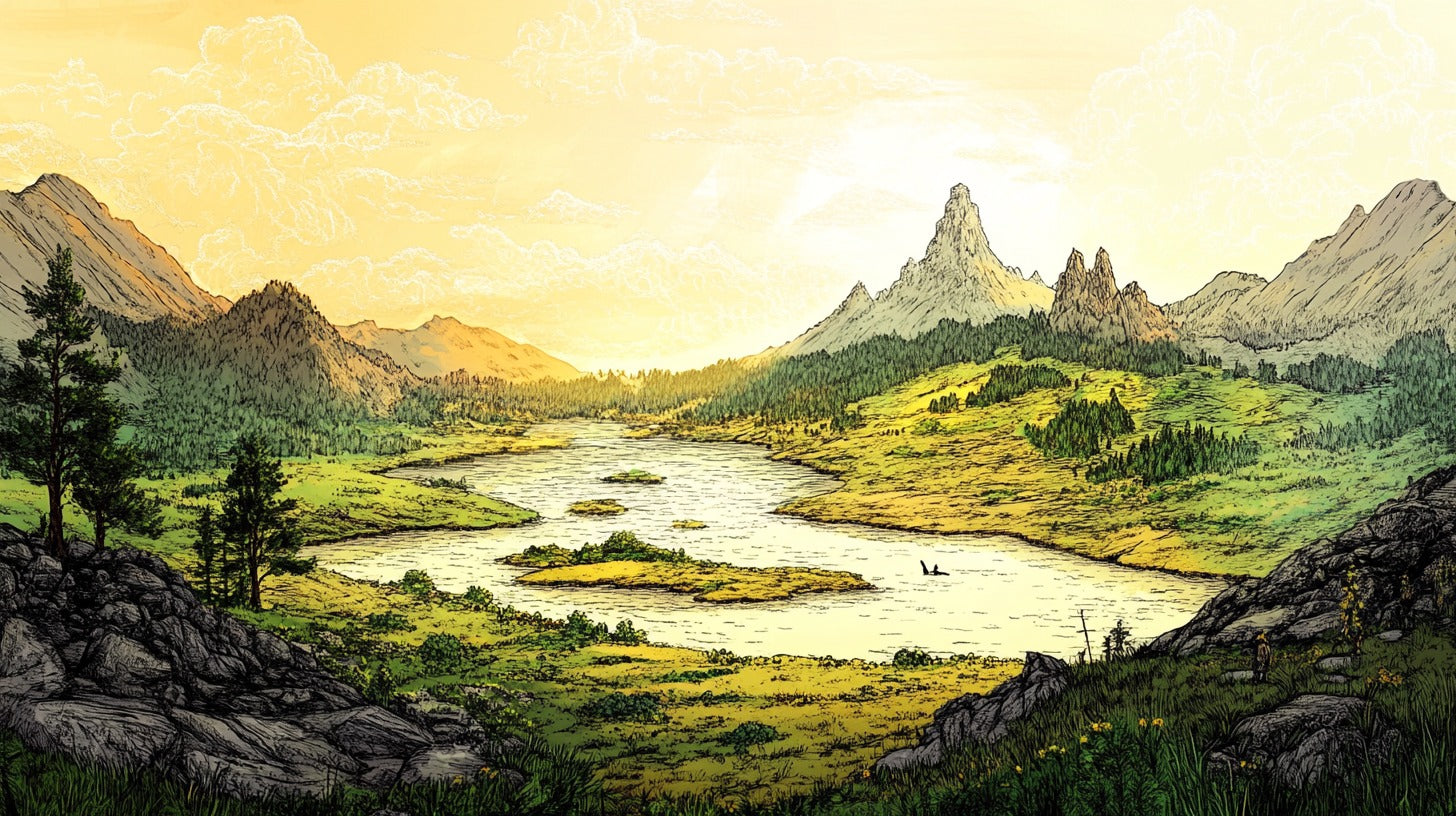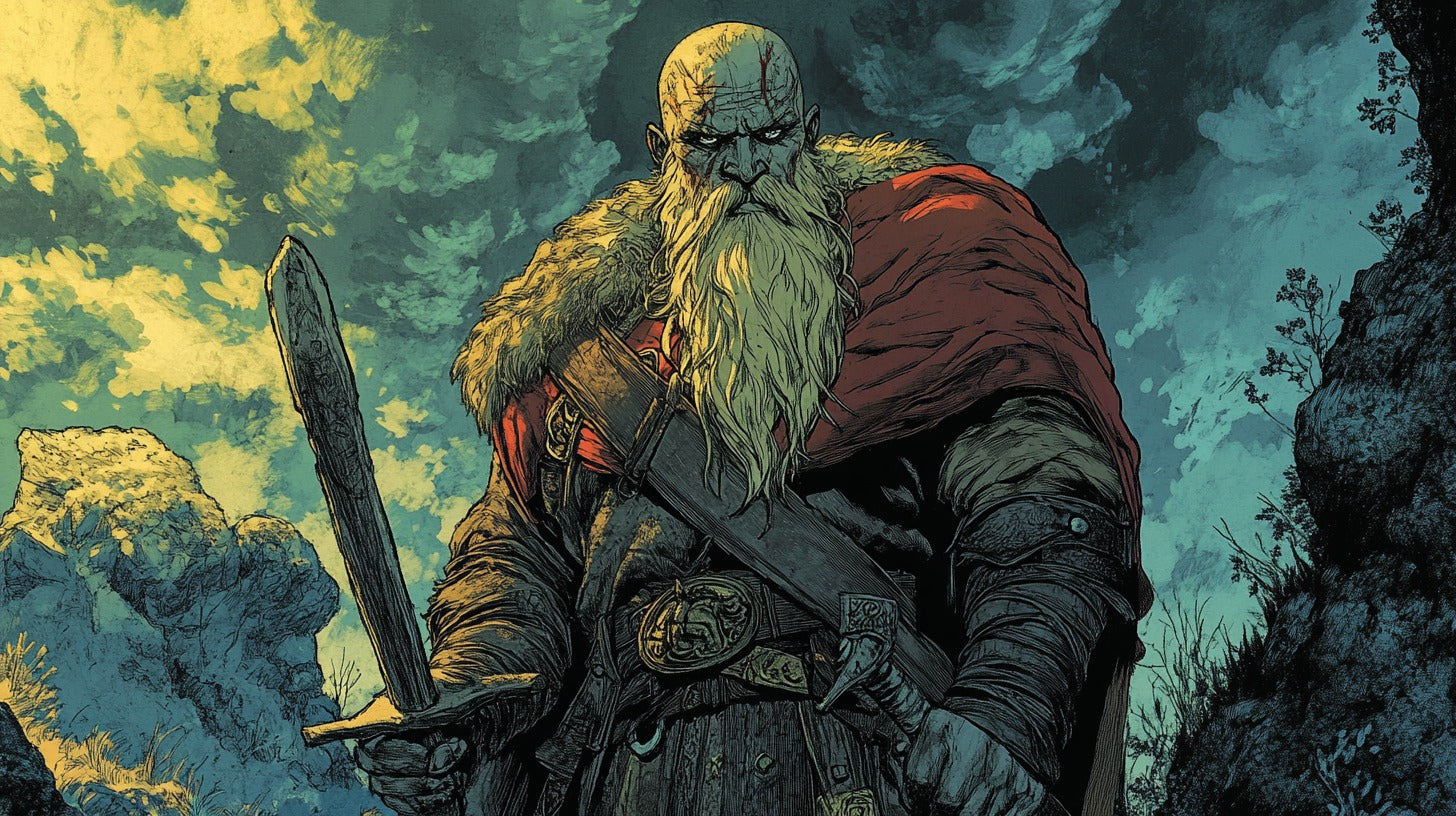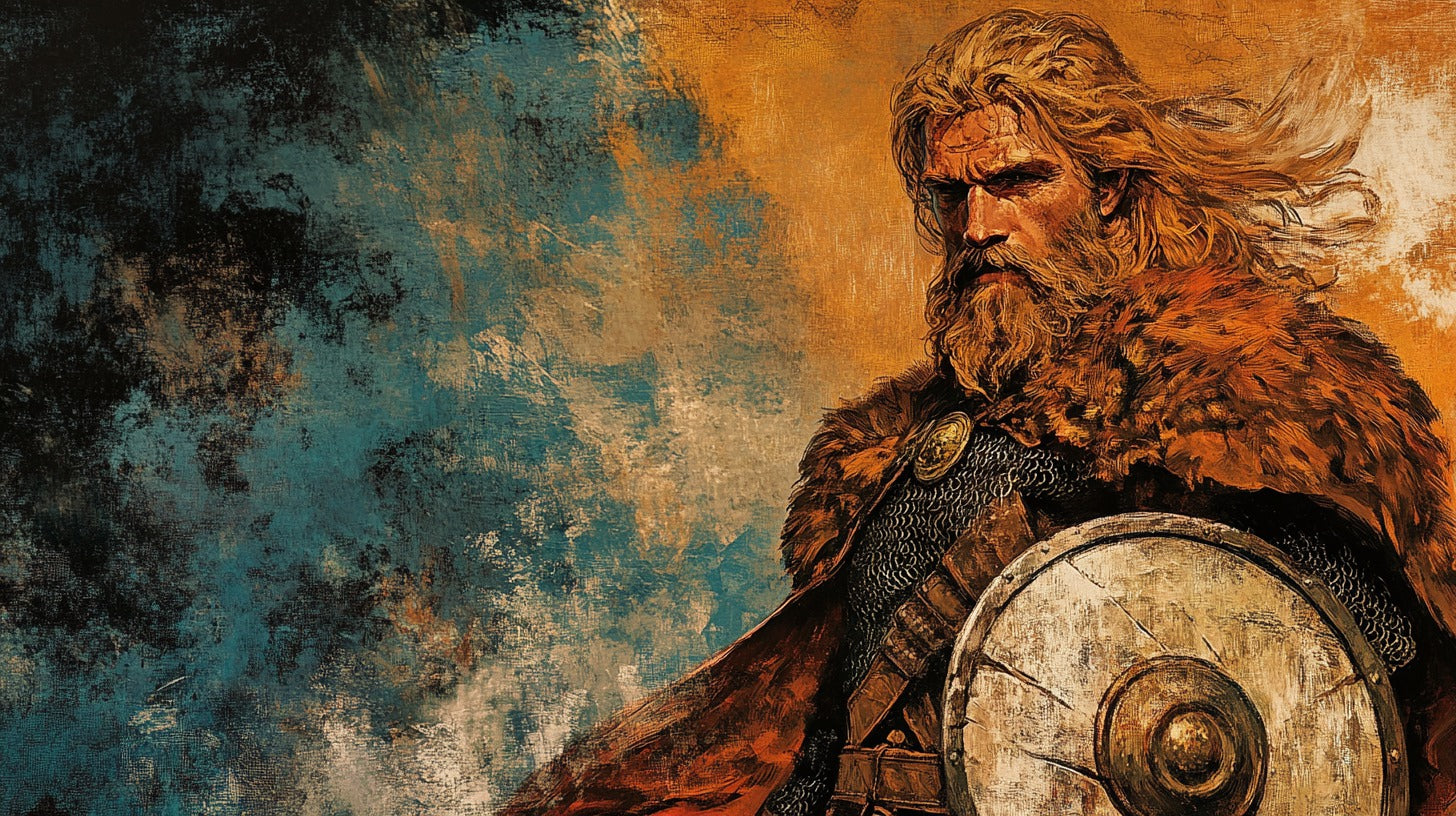
The Life and Death of Baldr: A Norse Mythological Epic
Baldr, also known as Balder or Baldur, is a prominent figure in Norse mythology, renowned for his beauty, wisdom, and tragic fate. As the son of Odin and Frigg, Baldr holds a significant place in the Norse pantheon and plays a crucial role in the mythological narrative leading to Ragnarök, the prophesied end of the world. This article delves into the life, death, and cultural impact of Baldr, exploring his representation in ancient Norse literature and modern interpretations.
The Life and Death of Baldr
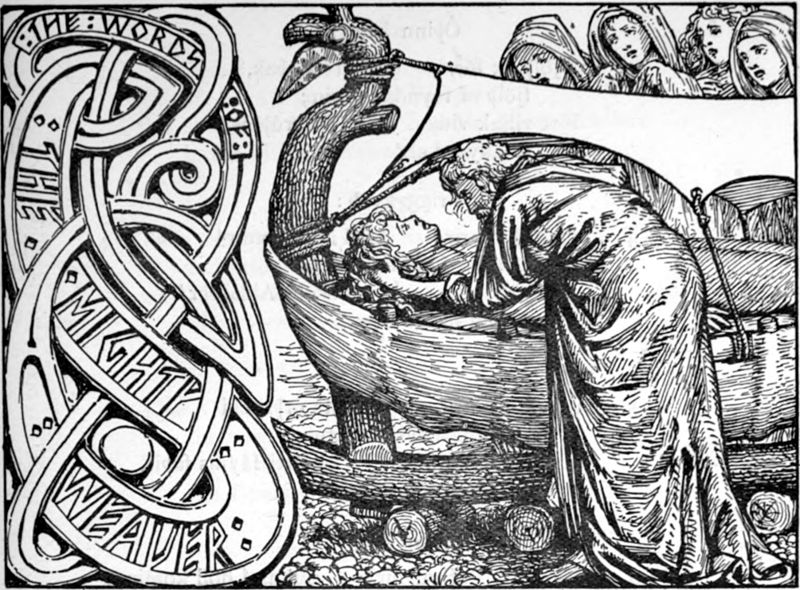
Odin's last words to Baldr (1908) by W. G. Collingwood.
Baldr's Origins and Family
Baldr was born to Odin, the Allfather and king of the Æsir gods, and Frigg, the goddess of foresight and wisdom. He had numerous siblings, including the thunder god Thor and the blind god Höðr. In the Norse pantheon, Baldr was associated with light, purity, and joy, standing out among his divine kin for his radiant beauty and gentle nature.
Characteristics and Attributes
Ancient Norse sources describe Baldr as the most beautiful of all the gods, possessing an almost luminous quality. He was known for his wisdom, eloquence, and grace. The 13th-century Icelandic scholar Snorri Sturluson, in his Prose Edda, portrays Baldr as so fair that light shone from him. This description aligns with Baldr's association with light and the sun in Norse cosmology.
Baldr was also renowned for his justice and benevolence. He was said to be the best of the gods, loved by all except the trickster god Loki. His hall in Asgard, called Breidablik ("Broad-gleaming"), was said to be a place where nothing impure could enter, reflecting Baldr's own purity and incorruptibility.
The Prophecy and Frigg's Protection
The story of Baldr's death begins with a series of ominous dreams that plagued the god, foretelling his demise. Disturbed by these visions, Baldr's mother Frigg took it upon herself to protect her son. She traveled throughout the nine worlds, extracting oaths from every object, animal, and being, swearing that they would never harm Baldr.
This act of maternal protection seemed to render Baldr invulnerable. The gods, amused by this newfound invincibility, began a game of throwing various objects at Baldr, marveling as everything bounced off him harmlessly. This display of Baldr's imperviousness would, ironically, set the stage for his eventual downfall.
The Death of Baldr
The central tragedy of Baldr's story lies in his death, a event that shook the foundations of the Norse cosmos. According to the most widely known version of the myth, as recorded in the Prose Edda, Loki, ever the mischief-maker, was jealous of Baldr's popularity and plotted his demise.
Disguising himself as an old woman, Loki approached Frigg and inquired if truly everything in the world had sworn not to harm Baldr. Frigg revealed that she had not bothered to ask the mistletoe, deeming it too young and insignificant to pose any threat. Armed with this knowledge, Loki crafted a dart from mistletoe and approached Höðr, Baldr's blind brother, who was standing apart from the others during their game of throwing objects at Baldr.
Loki offered to guide Höðr's hand so that he too could participate in honoring Baldr. Unaware of Loki's deceit, Höðr agreed and threw the mistletoe dart at Baldr. The dart pierced Baldr, killing him instantly. The death of Baldr, the beloved god of light and joy, plunged the Norse cosmos into mourning and set in motion a chain of events that would lead to Ragnarök.
The Aftermath of Baldr's Death
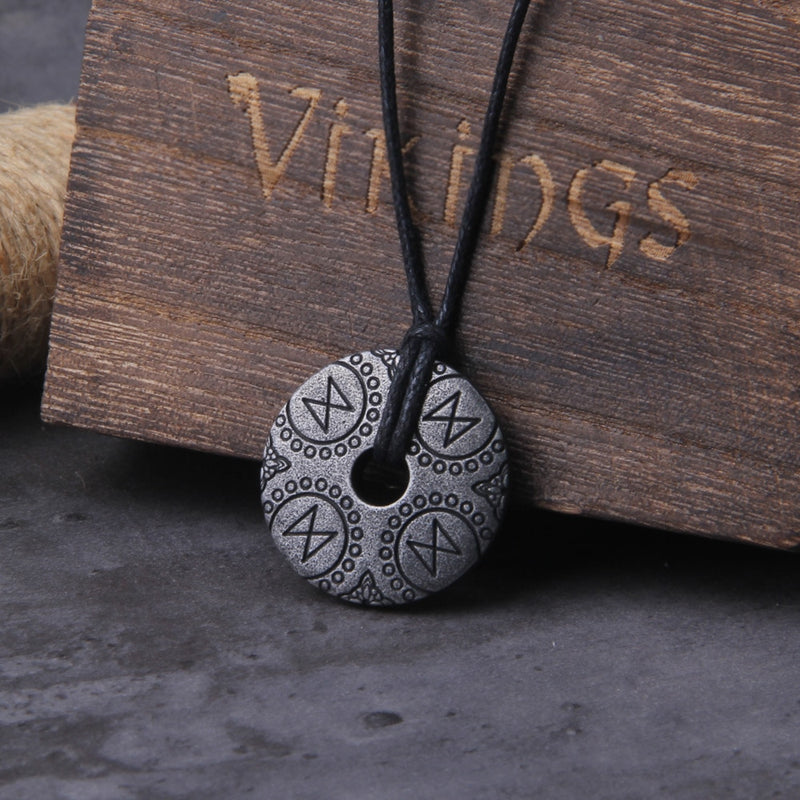
Bauldr's Fate - Dagaz Rune Amulet
Hel's Condition for Baldr's Return
Following Baldr's death, the gods were overcome with grief. Odin sent Hermod, another of his sons, to Hel, the underworld realm ruled by the goddess of the same name, to negotiate Baldr's return. Hel agreed to release Baldr on one condition: every being in all the worlds must weep for him. If even one refused, Baldr would have to remain in the underworld.
The gods sent messengers throughout the nine worlds, and indeed, all beings wept for Baldr - all except for one giantess named Þökk (often thought to be Loki in disguise). With this single refusal, Baldr was condemned to remain in Hel until Ragnarök.
Consequences for Loki
The gods soon discovered Loki's role in Baldr's death, leading to severe consequences for the trickster god. In retribution, the Æsir hunted Loki down and bound him with the entrails of his own son. A venomous serpent was placed above him, dripping venom onto his face. Loki's wife, Sigyn, collects the venom in a bowl, but when she must empty it, the venom falls on Loki, causing him to writhe in agony. According to prophecy, Loki will remain bound until Ragnarök.
Baldr's Role in Ragnarök
Despite his death, Baldr's story does not end in Hel. Norse prophecies speak of his return after Ragnarök, the great battle in which many gods will fall and the world will be destroyed and reborn. In this new world, Baldr is said to rise again, bringing light and hope to the renewed cosmos. This aspect of the myth presents Baldr as a figure of renewal and resurrection, embodying the cyclical nature of Norse cosmology.
Baldr in Norse Literature and Archaeology

"Mímir and Baldr Consulting the Norns" (1821–1822) by H. E. Freund.
Representations in Eddic Poetry
Baldr features prominently in several poems of the Poetic Edda, a collection of Old Norse poems preserved in a 13th-century Icelandic manuscript. The poem "Völuspá" (The Prophecy of the Seeress) mentions Baldr's death as a pivotal event presaging Ragnarök. "Baldrs draumar" (Baldr's Dreams) recounts Odin's journey to the underworld to consult a seeress about Baldr's troubling dreams.
Accounts in the Prose Edda
The most detailed account of Baldr's myth comes from Snorri Sturluson's Prose Edda, written in the 13th century. Snorri's version, while potentially influenced by Christian ideas, provides the most comprehensive narrative of Baldr's life, death, and significance in Norse mythology. It is in the Prose Edda that we find the famous account of Frigg's protection, Loki's trickery, and the mistletoe that proved fatal to Baldr.
Archaeological Evidence
While literary sources provide the bulk of our knowledge about Baldr, archaeological evidence is more limited and open to interpretation. Some scholars have suggested that certain bracteates (thin gold medals worn as jewelry) from the Migration Period (4th to 6th centuries CE) may depict scenes from the Baldr myth. However, these interpretations remain contentious in academic circles.
Interpretations and Cultural Impact

Niflheim's Jotnar Queen: Hel's Duel-Faced Ring
Scholarly Interpretations
The myth of Baldr has been subject to various interpretations by scholars of Norse mythology and comparative religion. Some see Baldr as a dying-and-rising god figure, drawing parallels with other mythological traditions. Others interpret his story as an allegory for the cycle of seasons, with Baldr representing the sun that dies in winter and is reborn in spring.
Folklorists have also noted similarities between Baldr's death and folk customs involving ritual mock executions of summer kings. However, direct links between these practices and the Baldr myth remain speculative.
Baldr in Popular Culture
In modern times, Baldr has appeared in various works of fiction, from literature to video games. His tragic story and association with light and beauty have made him a popular figure for reinterpretation and adaptation. Notable appearances include his role in Neil Gaiman's "American Gods" and his depiction in the "God of War" video game series.
These modern adaptations often take liberties with the original myth, sometimes blending different mythological traditions or reimagining Baldr's character for contemporary audiences. While these portrayals may not always align with historical sources, they demonstrate the enduring appeal of Baldr's story in popular culture.
Conclusion
Baldr remains one of the most intriguing and tragic figures in Norse mythology. His story, central to the Norse mythological cycle, embodies themes of love, betrayal, fate, and renewal. The death of Baldr serves as a turning point in Norse cosmology, setting the stage for the final battle of Ragnarök and the eventual rebirth of the world.
Despite the centuries that separate us from the original tellers of these tales, Baldr's myth continues to captivate scholars, artists, and enthusiasts of mythology. Its endurance speaks to the universal appeal of its themes and the complex, nuanced nature of Norse mythology as a whole. As we continue to study and reinterpret these ancient stories, Baldr's tale remains a poignant reminder of the depth and richness of Norse mythological tradition.
FAQs
- Who killed Baldr in Norse mythology?
Baldr was killed by his blind brother Höðr, who was tricked by Loki into throwing a dart made of mistletoe at Baldr.
- Why couldn't Baldr be brought back from the dead?
According to the myth, Baldr could only return if every being in all worlds wept for him. One giantess, believed to be Loki in disguise, refused to weep, thus preventing Baldr's return.
- What is Baldr's role in Ragnarök?
Prophecies state that Baldr will return after Ragnarök, helping to usher in a new, reborn world.
- How is Baldr depicted in Norse sources?
Baldr is typically described as the most beautiful of the gods, associated with light, purity, and justice.
- Are there any historical or archaeological evidences of Baldr worship?
